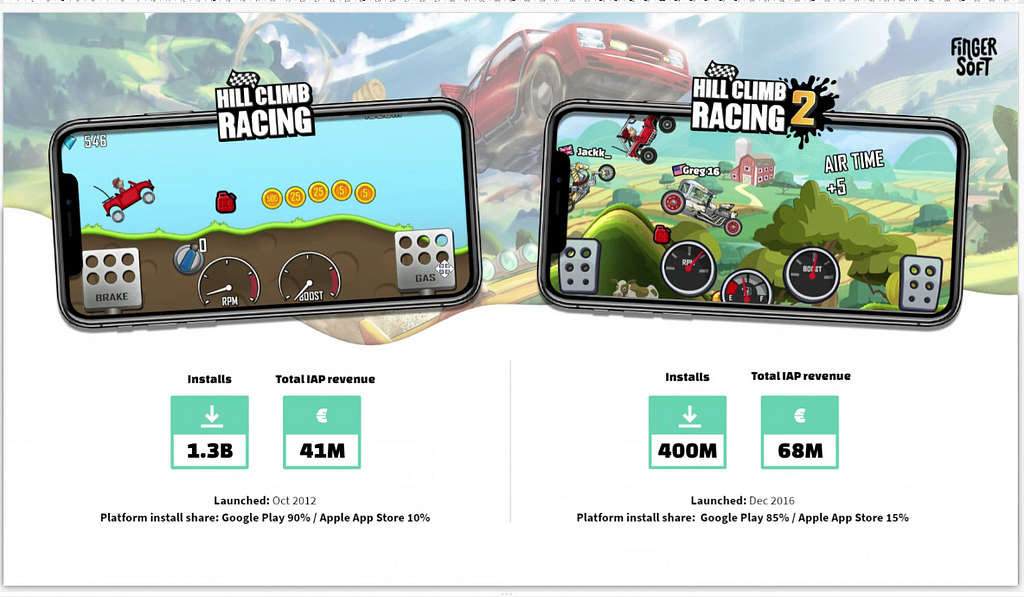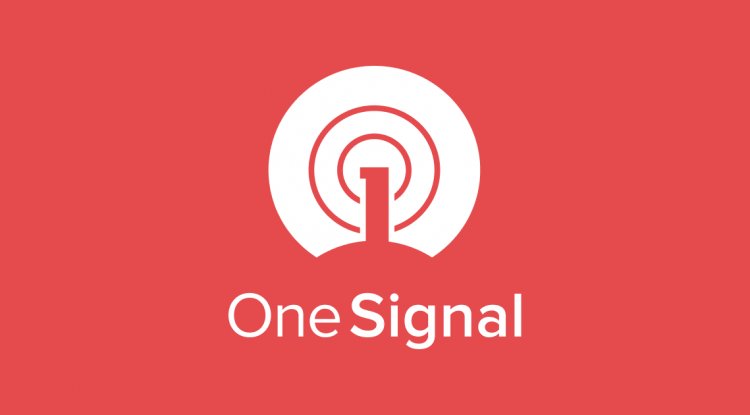Best practices for launching a sequel to your mobile game
Innovation in game development is often seen as launching a new type of game. However, there are many ways to innovate without starting afresh. Creating a sequel that builds on your success — using existing characters, proven mechanics, or exciting storylines that your players love — could be a better way to go.In this article, we share insights from Gonzalo Fasanella, CMO of Tactile, Jaakko Kylmäoja, CEO, and Daniel Rantala, BD Director, at Fingersoft, and Ezequiel Mottillo, Creative Director, at etermax. We explore how these studios increased their success by innovating within genre to launch sequels and how they mitigated the risks involved. In particular, we look at:How to determine whether a sequel is the right approachAvoiding the risks of cannibalizing previous titlesThe impact of a sequel on the team structure and motivationHow to tell if a sequel is the right approachThere are 3 main factors to determining whether a sequel is the right approach for you:Having a beloved titlePl


Innovation in game development is often seen as launching a new type of game. However, there are many ways to innovate without starting afresh. Creating a sequel that builds on your success — using existing characters, proven mechanics, or exciting storylines that your players love — could be a better way to go.
In this article, we share insights from Gonzalo Fasanella, CMO of Tactile, Jaakko Kylmäoja, CEO, and Daniel Rantala, BD Director, at Fingersoft, and Ezequiel Mottillo, Creative Director, at etermax. We explore how these studios increased their success by innovating within genre to launch sequels and how they mitigated the risks involved. In particular, we look at:
- How to determine whether a sequel is the right approach
- Avoiding the risks of cannibalizing previous titles
- The impact of a sequel on the team structure and motivation
How to tell if a sequel is the right approach
There are 3 main factors to determining whether a sequel is the right approach for you:
- Having a beloved title
- Player demand for more
- A desire to drive monetization and DAU growth
You’ve got a beloved title
Before considering a sequel, you should have a successful first title. While this may seem obvious, it’s important to be able to take advantage of a previous title, specifically:
- A highly engaged user base that is demanding more content
- A captive audience, ripe for cross-promotion (all three developers reported great success with cross-promotion).
- A team that can replicate the previous success by leveraging the original game’s narrative tone, art style, mechanics, and community.
You’ve identified a demand for more
Having a successful title isn’t enough to justify a sequel. Many successful studios continue for years or even decades updating and expanding on a single game. The 3 studios reported a common factor in their decisions to release sequels: the inability to meet a demand within the original game. This demand takes many different forms and could come from player requests or the behavior of player cohorts. For example:
- Tactile’s game Lily’s Garden is an engaging match-3 game in which a self-reflective, solo protagonist completes puzzles to upgrade her garden. As Lily’s Garden has strong narrative and character elements, the fan feedback suggested to Tactile that there was a demand for a game with a strong narrative that focused on indoor renovation, a combination that was missing in the market. To meet this demand, Tactile launched Penny & Flo using the same style and universe to offer an evolving 2-person narrative about renovating the interior of a beautiful mansion.
- Following the release of Hill Climb Racing, Fingersoft identified one audience that loved the simplicity of the game and another that wanted more features and competitive gameplay. A single title couldn’t meet both of these demands, so a feature-heavy sequel, Hill Climb Racing 2, was launched to provide for the requirements of the second audience.
“We released Hill Climb Racing, and it was iconic. To add all the new features we wanted to would break the attractive simplicity of Hill Climb Racing. We also needed a new platform with the same gameplay style but able to experiment and push boundaries.” — Jaakko Kylmäoja, CEO of Fingersoft
- etermax analyzed Trivia Crack heavily after launch. Once Trivia Crack had reached a satisfactory DAU, they realized that while the trivia genre is popular among the old and the young, certain age groups were less heavily engaged. Therefore, etermax designed Trivia Crack 2 and Trivia Crack Adventure with deeper player progression, more challenging modes, and a social twist that appealed strongly to a younger audience. This strategy ensured DAU growth for the franchise and helped etermax to achieve longer session lengths: from 6 minutes per session in Trivia Crack to 10 minutes for Trivia Crack 2 and 15 minutes for Trivia Crack Adventure.

You want to drive monetization and DAU growth
There is a strong drive in the industry to diversify revenue streams. Ensuring income through a range of games secures a studio against sudden changes. Having a range of games also increases the potential audience size by providing people with more ways to engage with the franchise. While diversifying revenue streams within a single title is possible, launching a sequel can be a less risky way to diversify.
Fingersoft’s Hill Climb Racing and Hill Climb Racing 2 is an excellent example of monetization diversification. The original game is a simple, casual experience monetized primarily through ads, with some low-cost IAPs available. Fingersoft wanted to diversify their monetization, but the game was popular due to its refined mechanics, controls, and balance — meaning that adding new features was a risk.

So they developed a sequel building on the same core mechanics but full of new features and social connectivity designed from the ground up to be a game as a service (GaaS). This meant that the original experience was protected and remained popular among a more casual audience. Morevoer, with the sequel, hardcore fans can now spend according to their habits and preferences. This drove up revenue from the existing audience. At the same time, the deeper progression and social and competitive mechanics enabled Fingersoft to attract new players and increase their DAU.

How to handle the risk of cannibalization
A common fear associated with launching a sequel is that it will cannibalize the audience of the original game rather than attracting new players. All the studios identified the same 3 considerations that helped them address this risk.
Offer something new
“The key to launching a successful sequel is making sure it answers these 2 questions: What is this audience looking for that the original game does not have? How can they complement each other to avoid user cannibalization between games?” — Ezequiel Mottillo, Creative Director, etermax
As previously discussed, ensure there is a real demand for something your original game cannot deliver. Whether it’s a new competitive mode, new gameplay, or expanding a narrative-rich world, all the studios prevent cannibalization by offering something desirable and different. They also reported that while new audiences were attracted to the sequel, many players played both games.
Celebrate retention
While you can avoid some cannibalization by offering something new, some players will stop playing the original and move to the sequel. In these cases, rather than fearing cannibalization, the studios preferred to see sequels as a way of driving retention.
“Sometimes you think that your players are only playing your games, and that’s not true. Every day you have a risk of losing that player. If people don’t go to your next game, they might go to a competitor.” — Gonzalo Fasanella, CMO, Tactile
So, instead of seeing player migration as a loss or wasted development cost, it should be seen as a way of ensuring that people at risk of churning are kept loyal to the franchise.
Retain your audience with cross-promotion
Cross-promotion may seem like a way of promoting cannibalization rather than mitigating it. However, the studios reported great success with cross-promotion as a way to drive the success of the sequel, grow their audience, and improve monetization.
- As previously mentioned, Hill Climb Racing 2 was designed to better optimize monetization. Therefore Fingersoft cross-promoted the sequel from Hill Climb Racing to ensure players were on the right game for their spending style. Cross-promotion fitted well into Hill Climb Racing, given that it was monetized primarily by in-game ads. The main message of the cross-promotion was the new PvP features and competitive modes in Hill Climb Racing 2. The cross-promotion also gave an initial boost of 20 million installs at launch for Hill Climb Racing 2 ensuring its success from day 1.
- etermax uses cross-promotion strategies to extend the lifetime value of players across their portfolio. These strategies include churn modeling to determine the right time to encourage migration to a sequel, and in-app capping and pacing to ensure players are not spammed.
- Tactile used their in-game rewarded ads at the end of levels in Lily’s Garden to promote Penny & Flo. This was a win-win solution for Tactile: reward users with extra coins while exposing them to the new games. Additionally, a permanent “Other Tactile Games” menu in Lily’s Garden ensures that people are aware of other titles from Tactile.


How launching a sequel can impact your studio and staff
When launching a sequel, you need to ensure both games get the attention they deserve. Achieving this can involve bringing on new staff and splitting up the existing team. At the same time, you will want to preserve the franchise’s identity. These changes can be challenging, but all of the studios viewed them as an opportunity to introduce new excitement and possibilities.
Making the right split
Compared to starting a new project from scratch, with a sequel you have a wealth of development material and experience on hand to move things along quickly. And, of course, your veteran staff are familiar with the original game’s genre, story, and development. The challenge is finding the right combination of veteran and new staff for the development teams. How best to do this depends on the style of the sequel project.
The approach taken by the studios broadly followed 2 strategies:
- where the sequel involved a continuation of the original experience, based on characters or narrative, more emphasis was placed on using veterans for the sequel’s development.
- where the sequel was more about introducing new features, social gameplay, and other innovations, new staff could be used more heavily and specific skill brought into the studio.
For example, Tactile’s games have a strong story element that fans love, and they wanted knowledgeable veterans to lead a team of new staff when embarking on the development of Penny & Flo. Combining old and new staff enabled Tactile to maintain a consistent identity and quality and continuing their story while training their new staff.
By contrast, when developing Hill Climb Racing 2. Fingersoft was able to make more use of new staff. This was because the wealth of new features and social mechanics in the sequel meant using a veteran team would not have mitigated development costs significantly.
Drive change with motivation
Both Tactile and Fingersoft mentioned that the decision to launch a sequel helped maintain team spirit and excitement. They cited this motivational boost as a key factor in both retaining talent and achieving success. However, to maintain this advantage, it’s important to be sensitive when splitting resources between multiple games.
The studios also found that sharing learnings between games teams helped avoid issues with those working on the original game feeling left behind. Creating a culture of sharing skills and insights has benefits post-launch as well. At etermax, teams on related games frequently meet to discuss activities and campaigns to see what could translate to other titles.
“Motivation to do something new was certainly a factor behind creating Hill Climb Racing 2 and created a buzz in the team. The new team needed more resources to operate a GaaS, and some talent moved from Hill Climb Racing to coach the new team members”. — Daniel Rantala, Director of BD, Fingersoft
Conclusion
As you look to grow your game portfolio and your studio, creating a sequel offers many advantages over creating a new game from scratch.
The starting point is a beloved game with characters, storyline, or mechanics that keep players engaged. You then need to discover whether segments of your audience are looking for experiences that would not fit naturally and comfortably in your original game.
By ensuring the sequel fulfills player desires and offers something new, you mitigate the risk of cannibalization. At the same time, the sequel should help address player leakage.
Finally, because a sequel builds on the skills and experience of your veteran team, with careful management, the energy created helps smooth the transition to a new team structure and helps bring on board new talent.
If you are ready to grow, give the option of creating a sequel some serious consideration.
You might also like to check out these resources when considering whether to launch a sequel
- Medium blog Your first success: a burden or a new opportunity? to discover strategies for managing old game titles.
- Medium blog Understand your players better with affinity to understand which types of games your players may want to play next.
- Play Academy course Maximize pre-launch momentum with pre-registration.
Best practices for launching a sequel to your mobile game was originally published in Google Play Apps & Games on Medium, where people are continuing the conversation by highlighting and responding to this story.
What's Your Reaction?





















